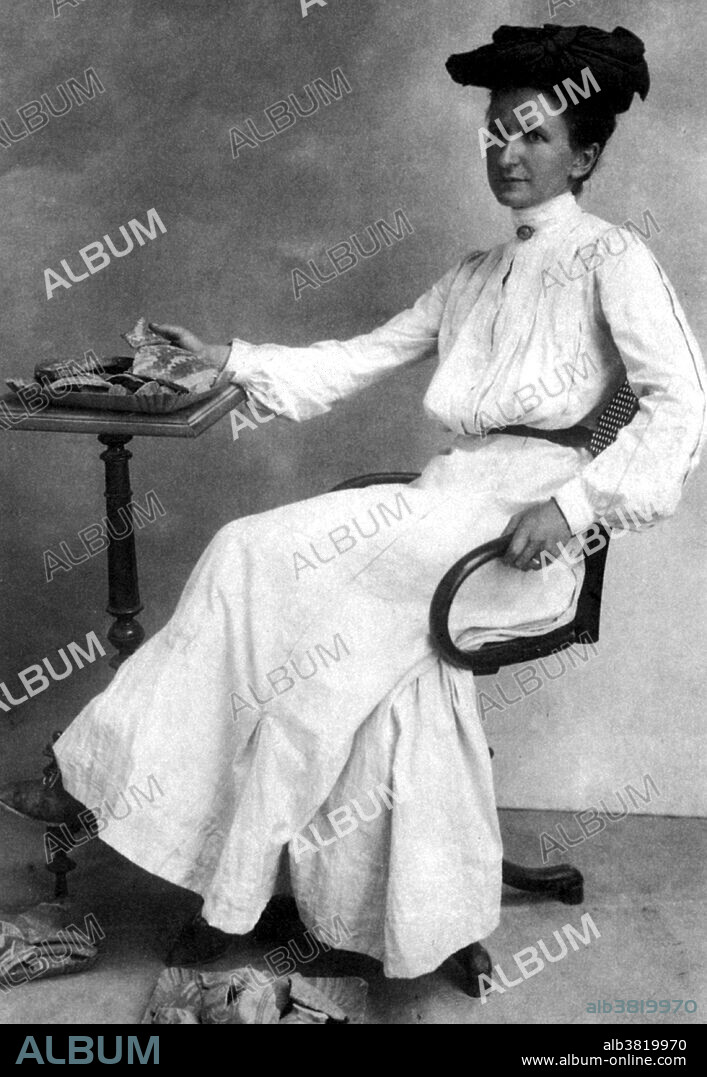alb3819970
Harriet Boyd, American Archeologist

|
Añadir a otro lightbox |
|
Añadir a otro lightbox |



¿Ya tienes cuenta? Iniciar sesión
¿No tienes cuenta? Regístrate
Compra esta imagen.
Selecciona el uso:

Título:
Harriet Boyd, American Archeologist
Descripción:
Ver traducción automática
Boyd displays pieces of broken Minoan bowls, jars, and vases in 1902. Harriet Boyd-Hawes (October 11, 1871 - March 31, 1945) was a pioneering American archeologist, nurse and relief worker. In 1896 she started graduate work at the American School of Classical Studies in Athens and also served as a volunteer nurse in Thessaly during the Greco-Turkish War. In 1900 she led an excavation at Kavousi during which she discovered settlements and cemeteries of Late Minoan IIIC, Early Iron Age, and Early Archaic date (1200-600 BC) at the sites of Vronda and Kastro. She accepted a position at Smith College teaching Greek Archeology. Between 1901-04, she returned to Crete where she discovered and excavated the Minoan town at Gournia. In 1902, she described her discovery during a national lecture tour and was the first woman to speak before the Archeological Institute of America. During another trip to Crete, she met Charles Henry Hawes, an English anthropologist and archaeologist whom she married in 1906. She excavated many more Bronze and Iron Age settlements in the Aegean and became a recognized authority on the area. She died in 1945, at the age of 73.
Crédito:
Album / Science Source / New York Public Library
Autorizaciones:
Modelo: No - Propiedad: No
¿Preguntas relacionadas con los derechos?
¿Preguntas relacionadas con los derechos?
Tamaño imagen:
3262 x 4726 px | 44.1 MB
Tamaño impresión:
27.6 x 40.0 cm | 10.9 x 15.8 in (300 dpi)
Palabras clave:
AMERICANO • ARQUEOLOGIA • BASES • BLANCO Y NEGRO • CIENCIA • CRETA • EDAD BRONCE • EDAD DE BRONCE • EDAD DE HIERRO • ESTADOS UNIDOS DE AMERICA • ESTADOS UNIDOS • FAMOSA • FAMOSO • FIGURA • FOTO • FOTOGRAFIA • GENTE • GRECIA • HISTORIA • HISTORICO • IMPORTANTE • MUJER • MUJERES • PERSONA • PERSONALIDAD • PERSONALIDADES • S. XX • SIGLO XIX • SIGLO XX
 Pinterest
Pinterest Twitter
Twitter Facebook
Facebook Copiar enlace
Copiar enlace Email
Email
